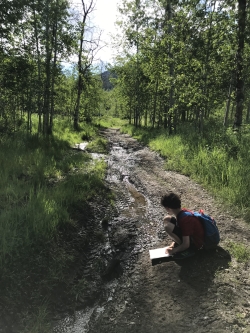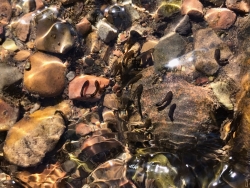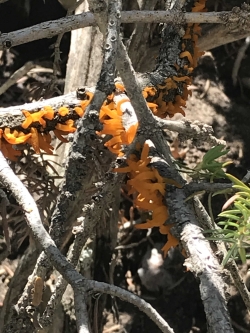Going In
As a Stokes Nature Center camp leader one summer, my focus for the day was on alpine forest plants as we set out on a northern Utah trail. I carried plant presses and field guides, ready to teach how to identify a Douglas fir from a Lodgepole pine and to have them hug quaking aspens blindfolded to discover distinguishing characteristics of each trunk. These youngsters were going to learn every forest fact I could share, I thought, but they quickly taught me the meaning of naturalist John Muir’s quote: “I only went out for a walk, and finally concluded to stay out till sundown, for going out, I found, was really going in.”
Black Fly Larvae
Nathan’s Mac & Cheese
I’m Shannon Rhodes, and I am wild about Utah.
Credits: https://wildstore.wildsanctuary.com/ https://edithbowen.usu.edu/
Additional Reading:
EcoSpark. https://www.ecospark.ca/black-fly
Lasky, Kathryn. One Beetle Too Many: The Extraordinary Adventures of Charles Darwin. Candlewick Press, 2009.https://www.amazon.com/One-Beetle-Too-Many-Extraordinary/dp/0763668435
Mertins, Brian. How to increase curiosity with nature. https://nature-mentor.com/increase-curiosity/
Natural History Museum of Utah. https://nhmu.utah.edu/citizen-science
O’Connor, Mike. Why Don’t Woodpeckers Get Headaches? And other bird questions you know you want to ask. Beacon Press, 2007.https://www.amazon.com/Why-Dont-Woodpeckers-Get-Headaches-ebook/dp/B001GQ1TCK/
Stokes Nature Center. https://logannature.org/
Utah State University Extension. Key to Aquatic Macroinvertebrate Life in Utah Ponds and Streams. https://extension.usu.edu/waterquality/macrokey/
Wolfe, Linnie Marsh. John of the Mountains: The Unpublished Journals of John Muir. Madison: University of Wisconsin Press, 1938.https://www.amazon.com/John-Mountains-Unpublished-Journals-Muir/dp/0299078841



